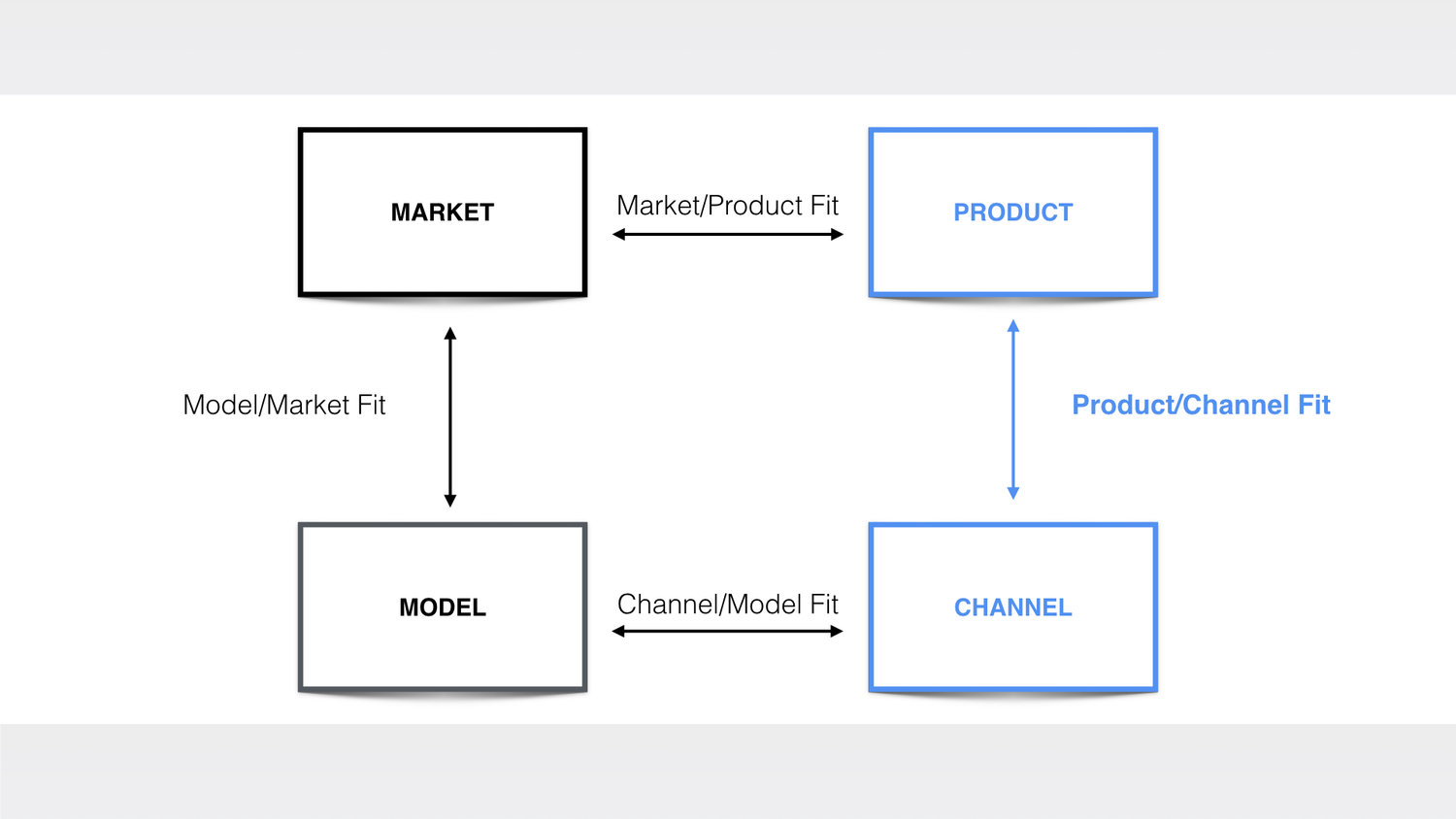Product channel fit may be a lesser-known concept than product market fit, but while it can be overlooked, don’t underestimate this important strategy to improve product growth.
If you’re new to product channel fit, this guide will introduce you to what it is, how it works, and why it matters if you want to grow.
What is Product Channel Fit?
Product channel fit is, put simply, when a product is molded to fit with a specific distribution channel.
To best optimize your brand, product, or content, you need to consider the role-specific channels can play in your marketing strategy, as well as the ways in which they already operate.
Major distribution channels like Google, Facebook, Instagram, and email clients each have their own internal rules that determine what users see and access.
For example, Google defines what content appears in the top 10 search results and controls what those results look like. It also determines which ads appear and the rules of their cost.
Product channel fit takes each channel’s existing rules and the way they operate into consideration and adapts the product for those channels to optimize reach and results — a wider audience, more sales, increased email signups — and ultimately achieve product growth.

Image Source: Product Channel Fit Will Make or Break Your Growth Strategy
Why You Shouldn’t Over-Rely on Product Market Fit
It can be easy to rely solely on product market fit, but this means you’re missing out on half of the picture.
Product market fit focuses on how and to what degree your product satisfies a market need. To achieve product market fit, you can continue to adjust your product until it “fits” the market need.
But stopping there means you’re not optimizing audience growth and engagement for your product. Product channel fit will fill this gap in a few ways:
People generally outside the target market will be better able to find your product, they will introduce potential new customers to your product, and it will improve your own ability to stay flexible with ever-shifting channels.
After all, you control your product, but you cannot control the channel, so take advantage of that flexibility on your end.
How to Find Product Channel Fit
Start by figuring out how each major distribution channel works. What types of Instagram ad would be best suited to show off your product? How do email clients sort spam and what content formats are allowed in emails? How does Facebook define what appears in users’ feeds and what is allowed via the platform’s APIs?
Once you find out how these platforms work and the rules that govern the content, you have the opportunity to take advantage of them using product channel fit.
There are several ways to do this if you pay attention to the general elements of products that fit with different categories of channels.
Virility
Platforms like TikTok, Twitter, and Instagram encourage virility because viral cycles tend to be short, also known as quick time to value.
For your product to go viral, it also needs to have a broad value prop, which means the value prop of the product must be of interest to a large number of users on the given channel.
Lastly, the more engaged your network and target audience are on the channel, the better the odds of virility.
Paid Marketing
Paid marketing works with most platforms that accept ads, including Google, Instagram, Facebook, and YouTube. To achieve product channel fit via paid marketing, there are a few factors to consider.
Users have less patience for ads, so make sure the ad conveys your product’s value as quickly as possible.
Different segments of your target audience may have different needs/wishes that the product can fulfill. Make sure you’re articulating the right value prop, in the right way, for each segment of your audience
Ideally, the product is built to extract transactional value to fund further paid marketing.
UGC SEO
This is best suited to content creator-heavy channels, such as YouTube or TikTok. For effective UGC SEO, the product needs to enable users to create a large quantity of unique content. The volume of content will reach users’ audiences and create more recognition and excitement for your product.
For this to happen, however, the product needs to elicit the core motivation to contribute content in the first place.
How to Optimize Product Channel Fit
Try to figure out one or two channels at a time before launching your product on others. Just as channels cannot change to fit products, your product may be a better fit for certain channels over others. Pay attention to what works on different channels — and what doesn’t; what might captivate audiences on TikTok may not be of much interest to those on Facebook.
However, you can be creative about how to achieve product channel fit for various platforms. Think outside the box and keep your product flexible so that you can adapt quickly if necessary.
Expand into additional channels when you have comfortably found product channel fit through virility, paid marketing, or UGC SEO. Evolve with the times and stay nimble; a platform may not be around forever, or a new one could take off seemingly overnight, so pay attention to the predictability and stability of a channel.
Product Channel Fit in Action
For an example of effective product channel fit, look to meal kit delivery service HelloFresh.
The company advertises on multiple channels, including YouTube ads, sponsored content with YouTube and TikTok creators, Instagram and Facebook ads, and Google ads.
Through all of these platforms, HelloFresh covers the virality, paid marketing, and USG SEO elements of product channel fit. It appears on the first page of Google when you search “meal kit delivery service” and is a highly recognizable brand.
Wrapping Up
Product channel fit is highly adaptable and works in tandem with product market fit. Take advantage of the rapidly changing landscape of social media and other platforms to improve not only your product growth and the range of potential audience members, but also your product’s relationship with them.
